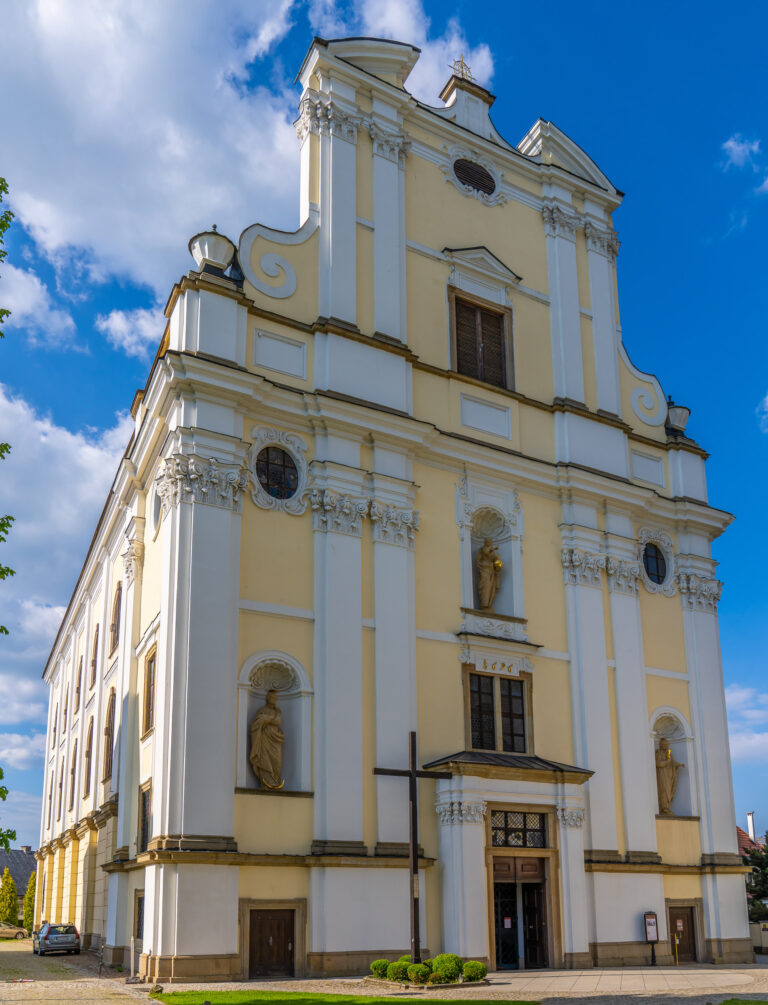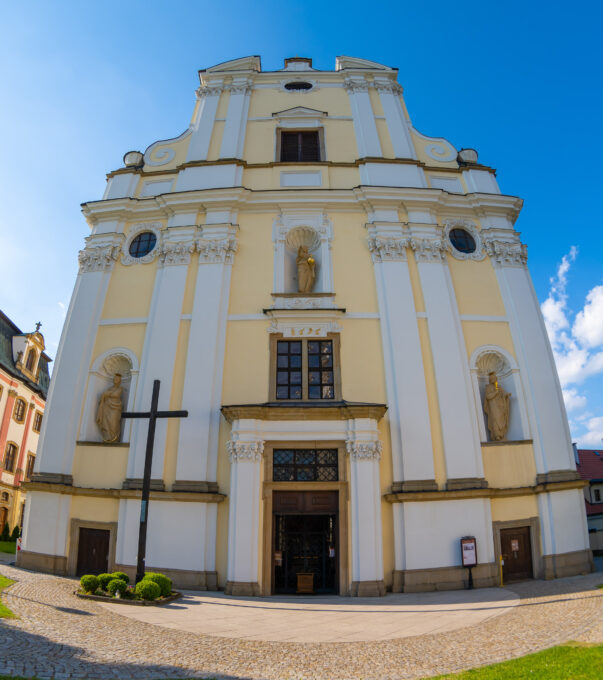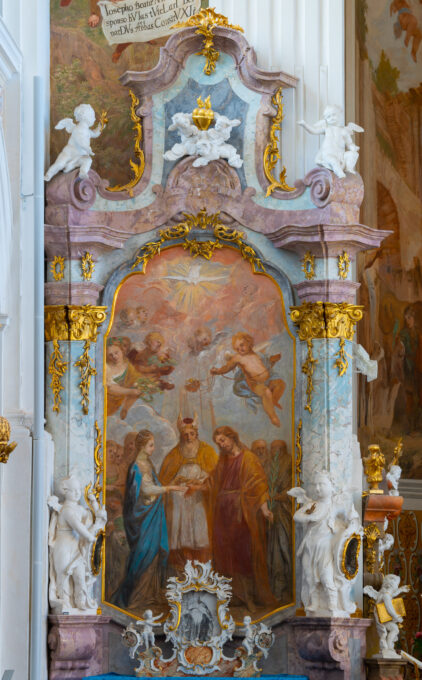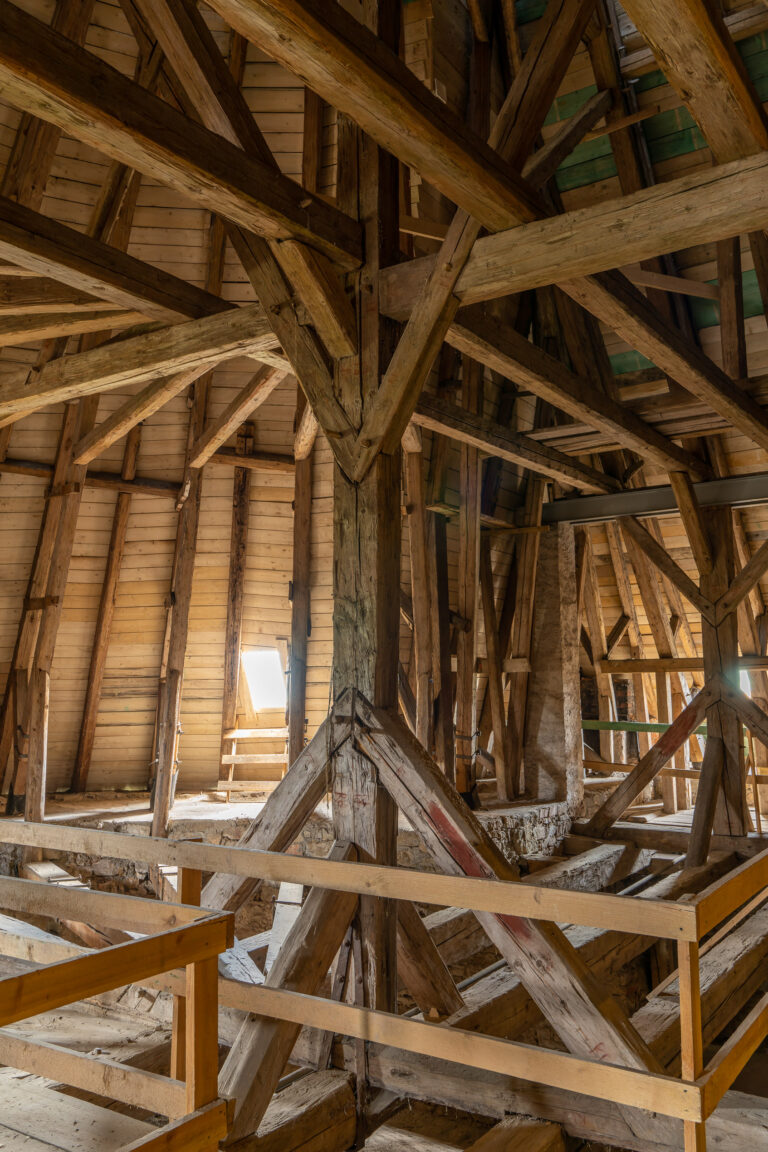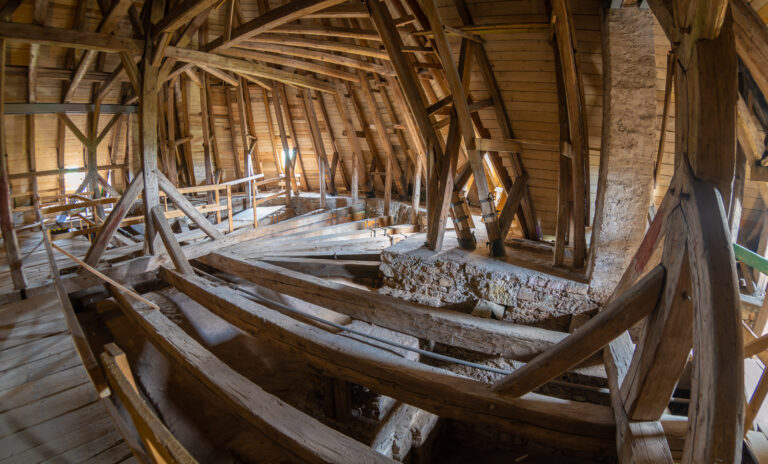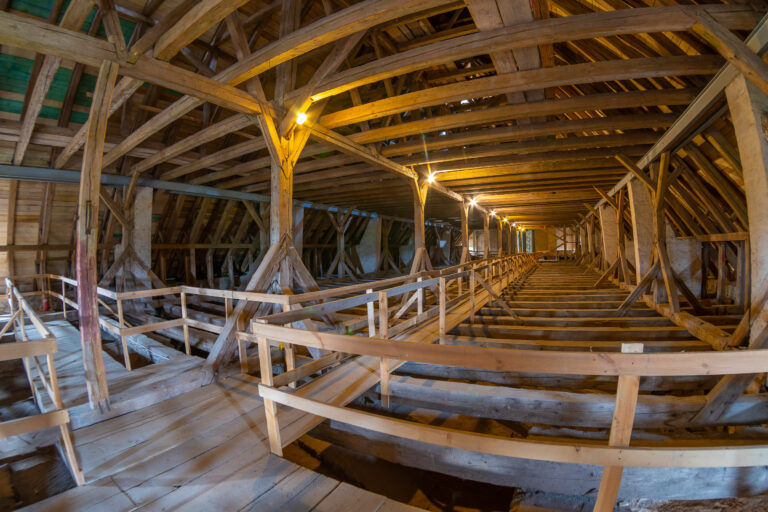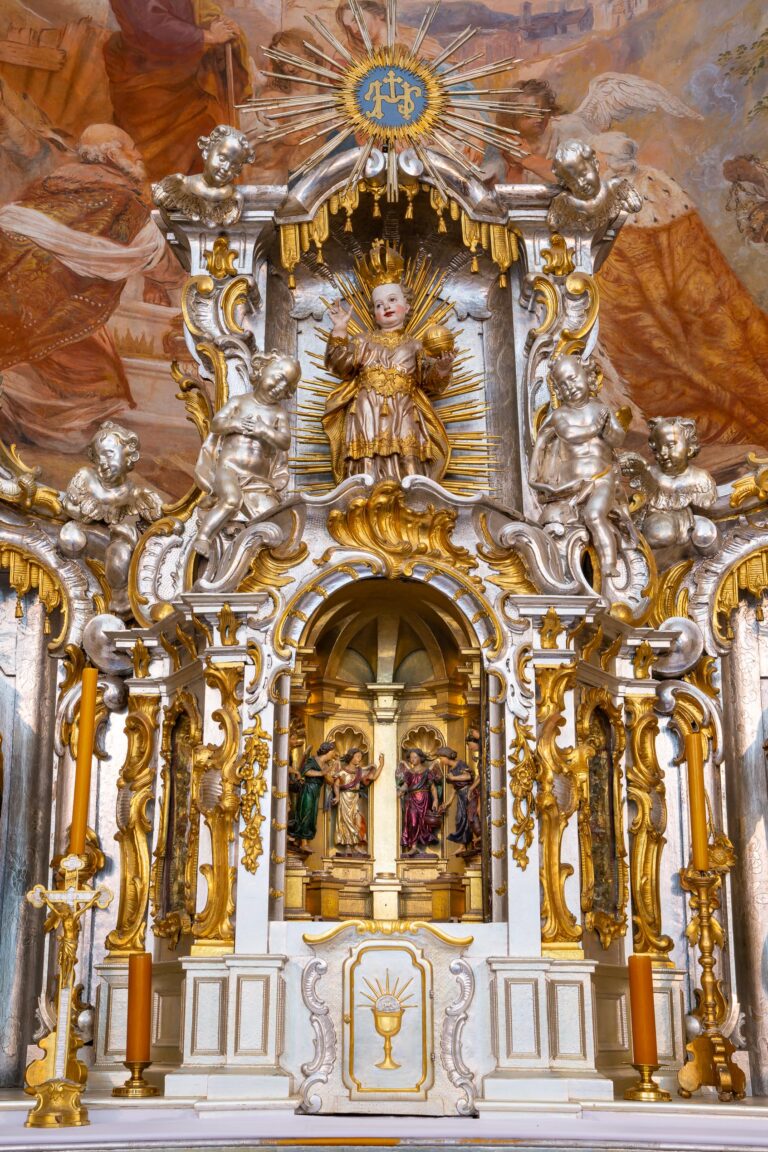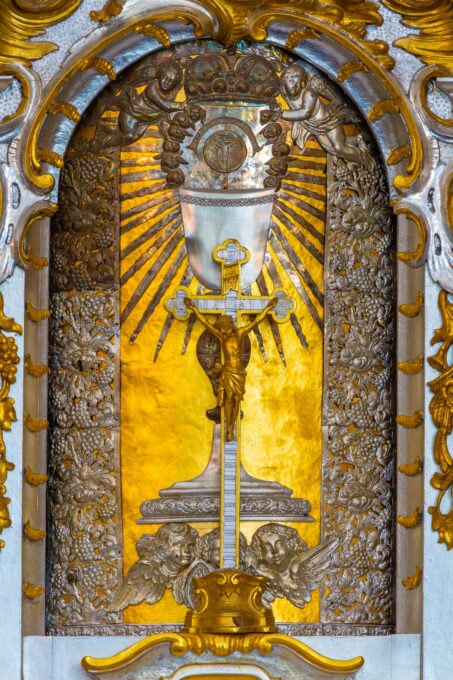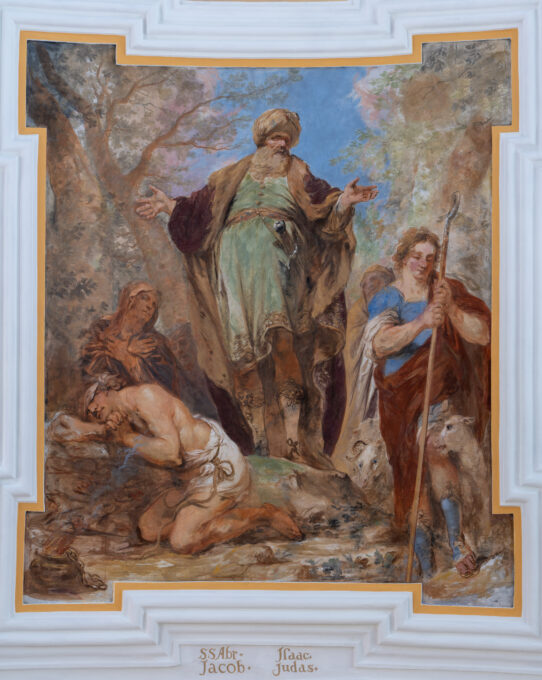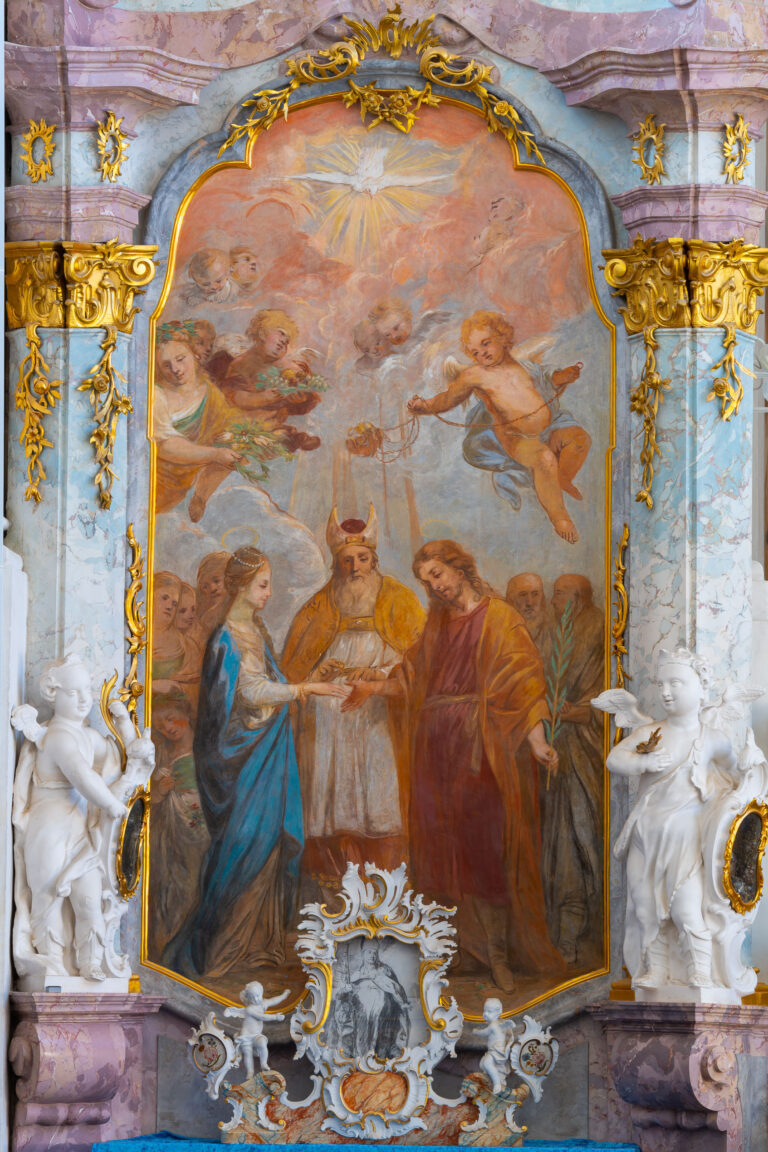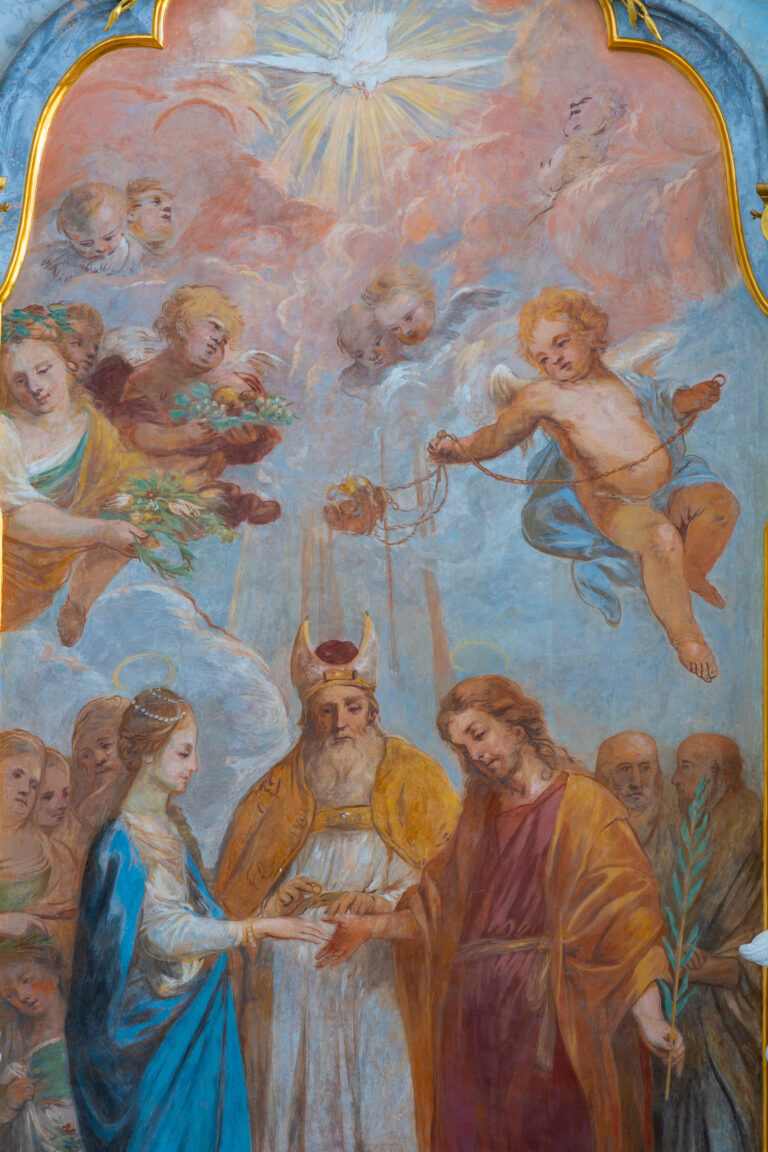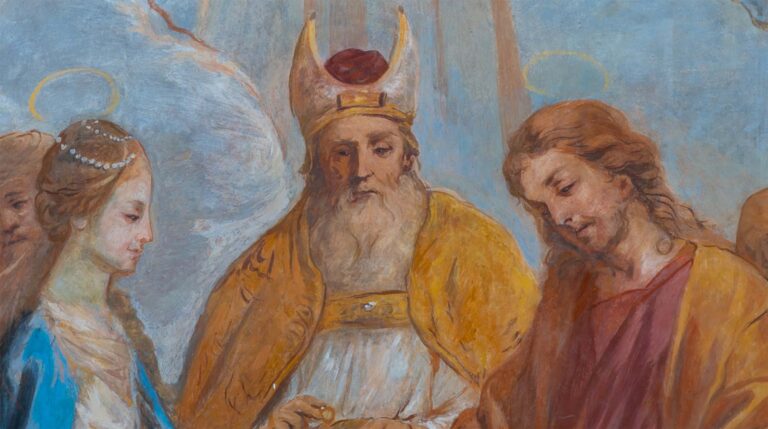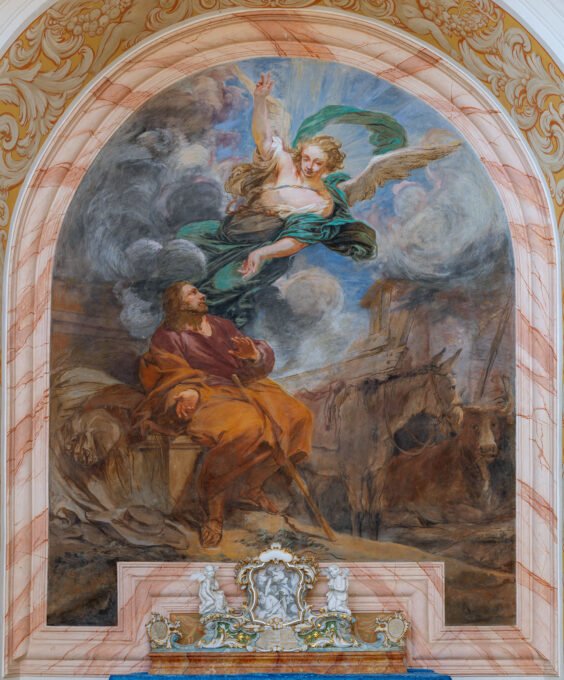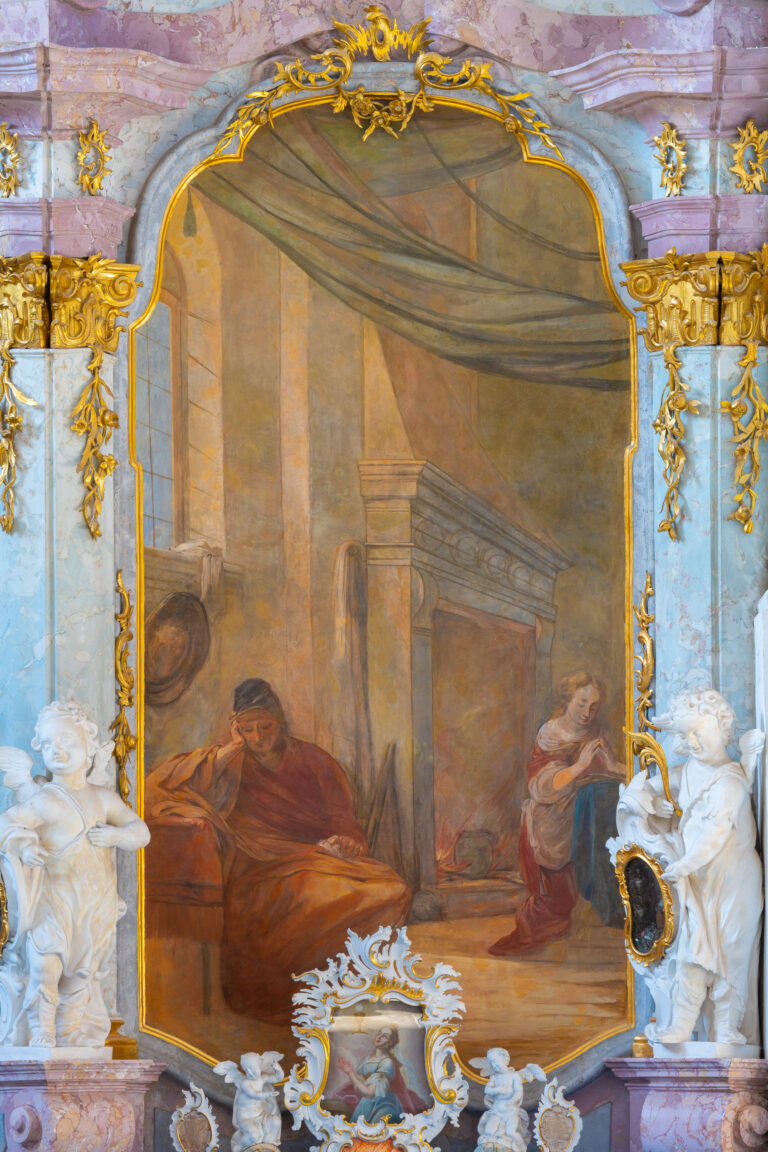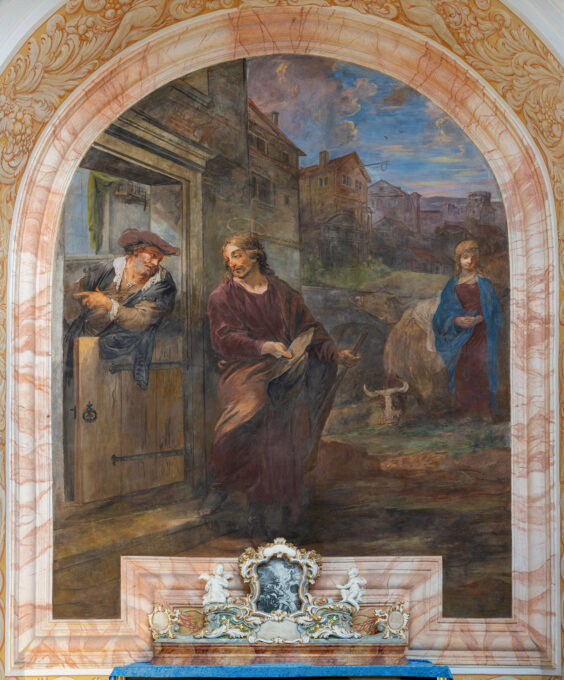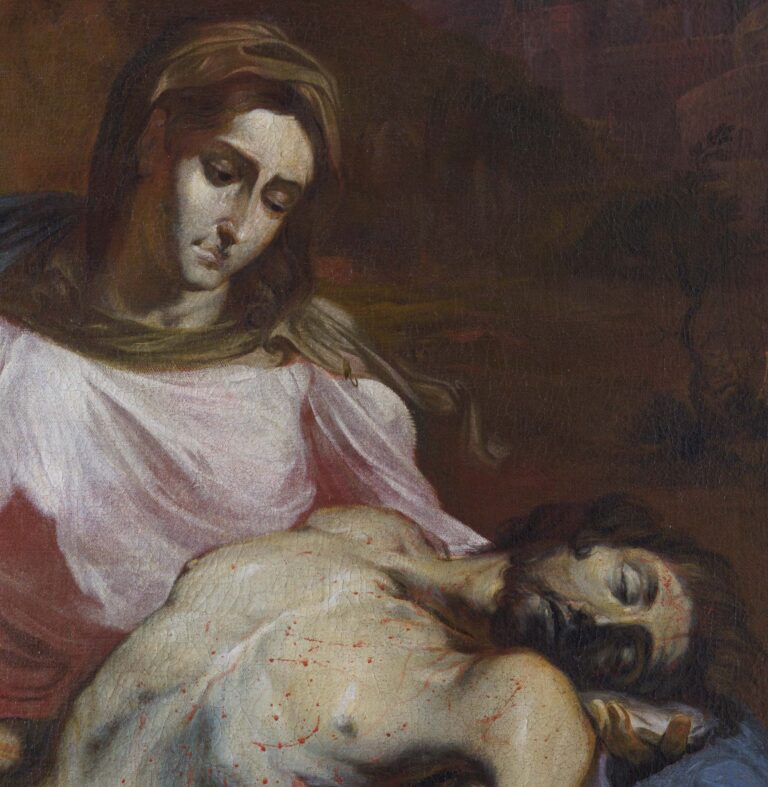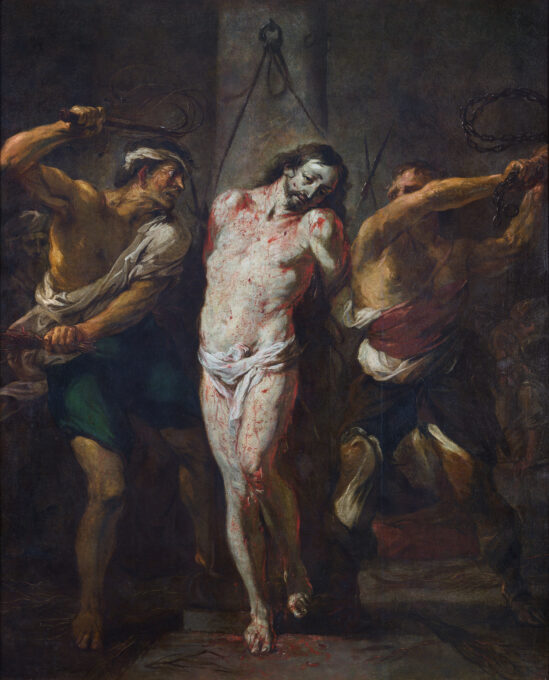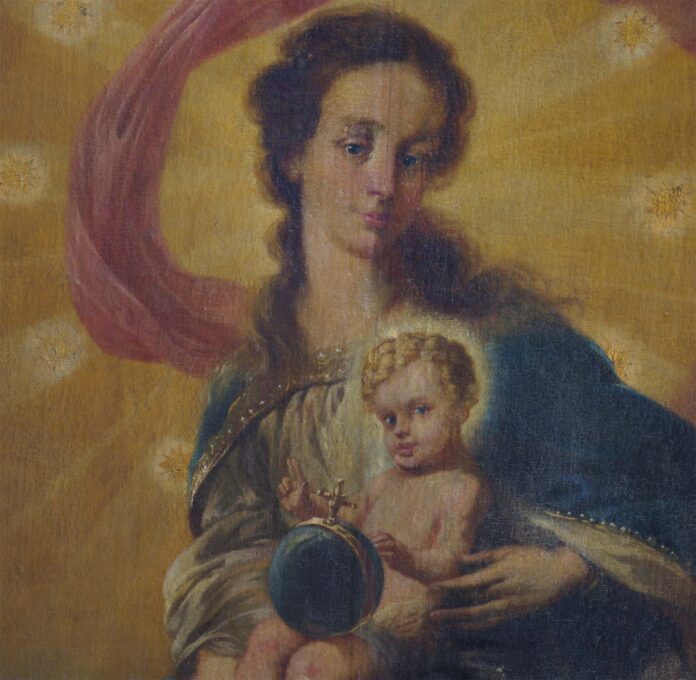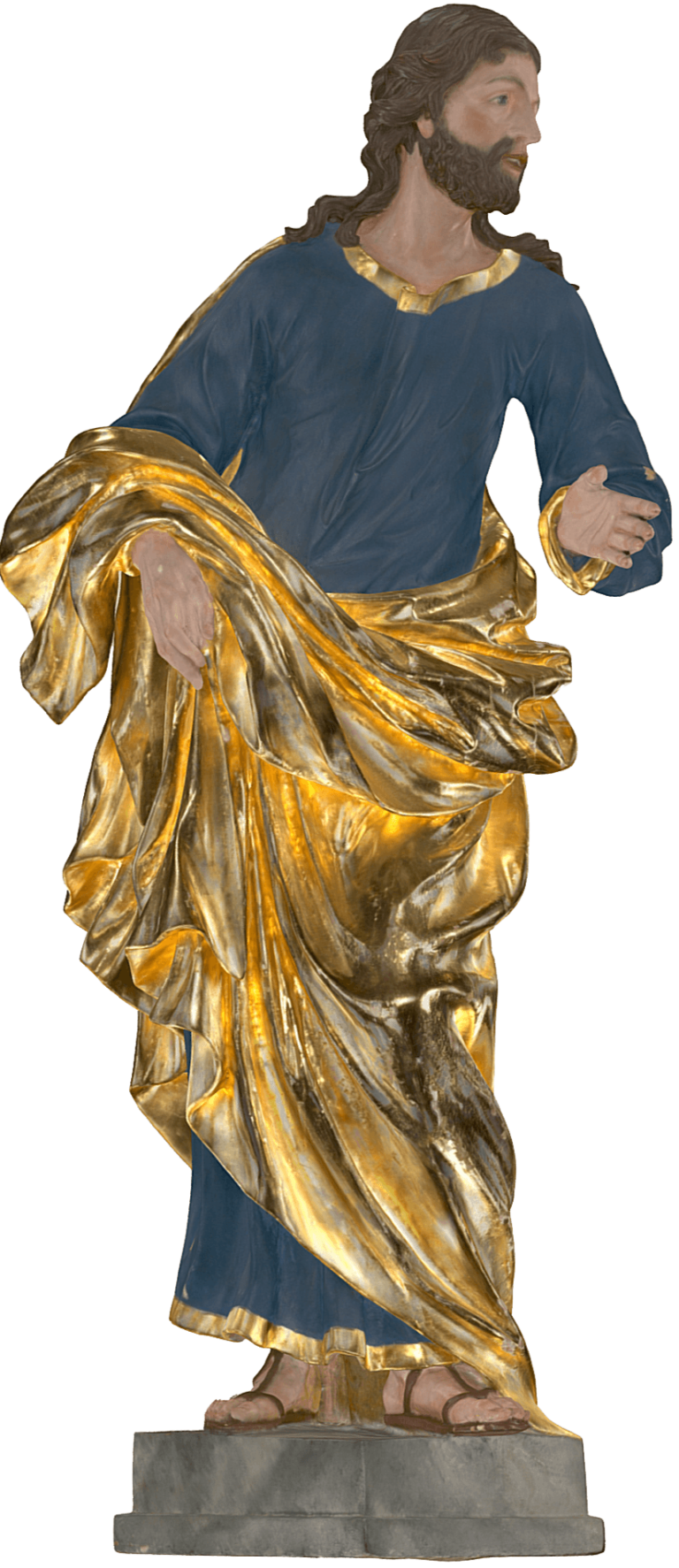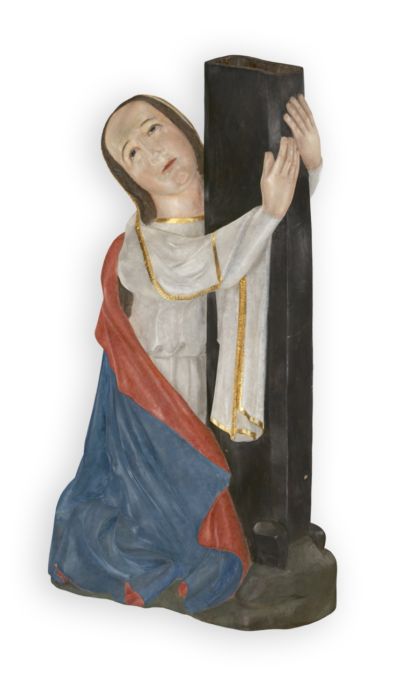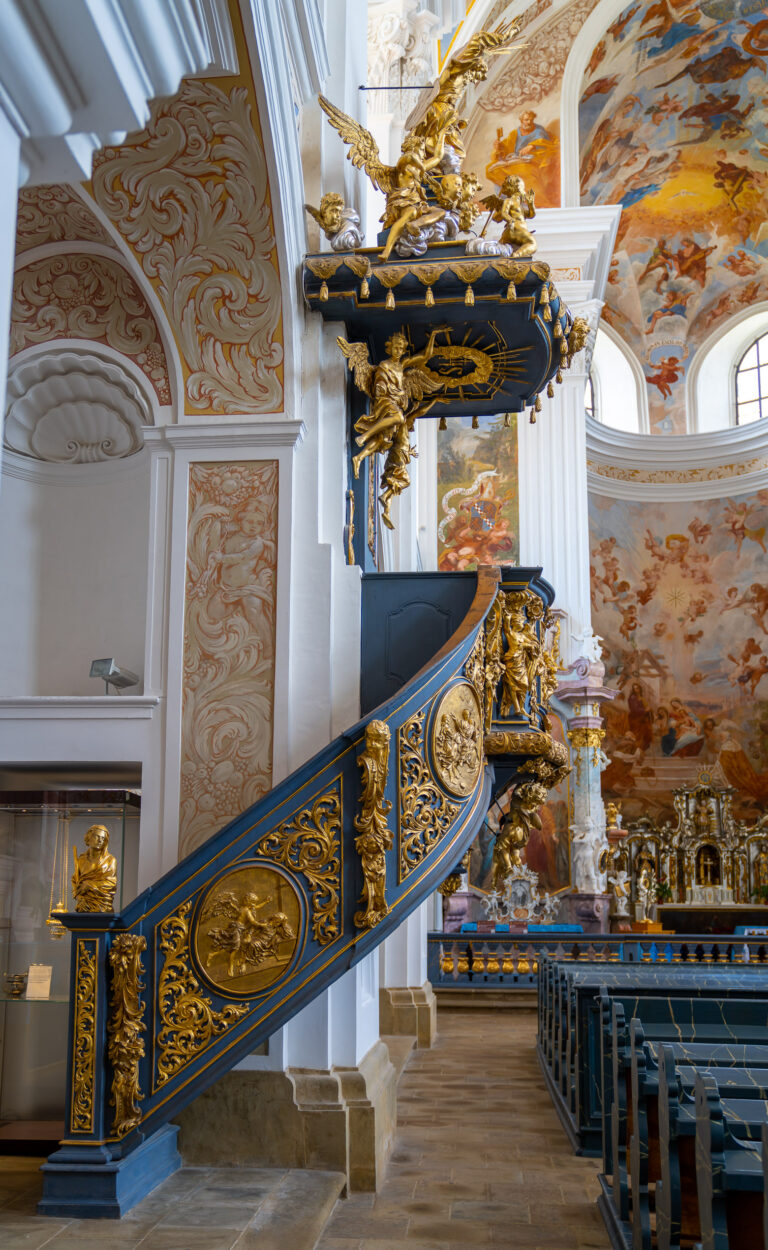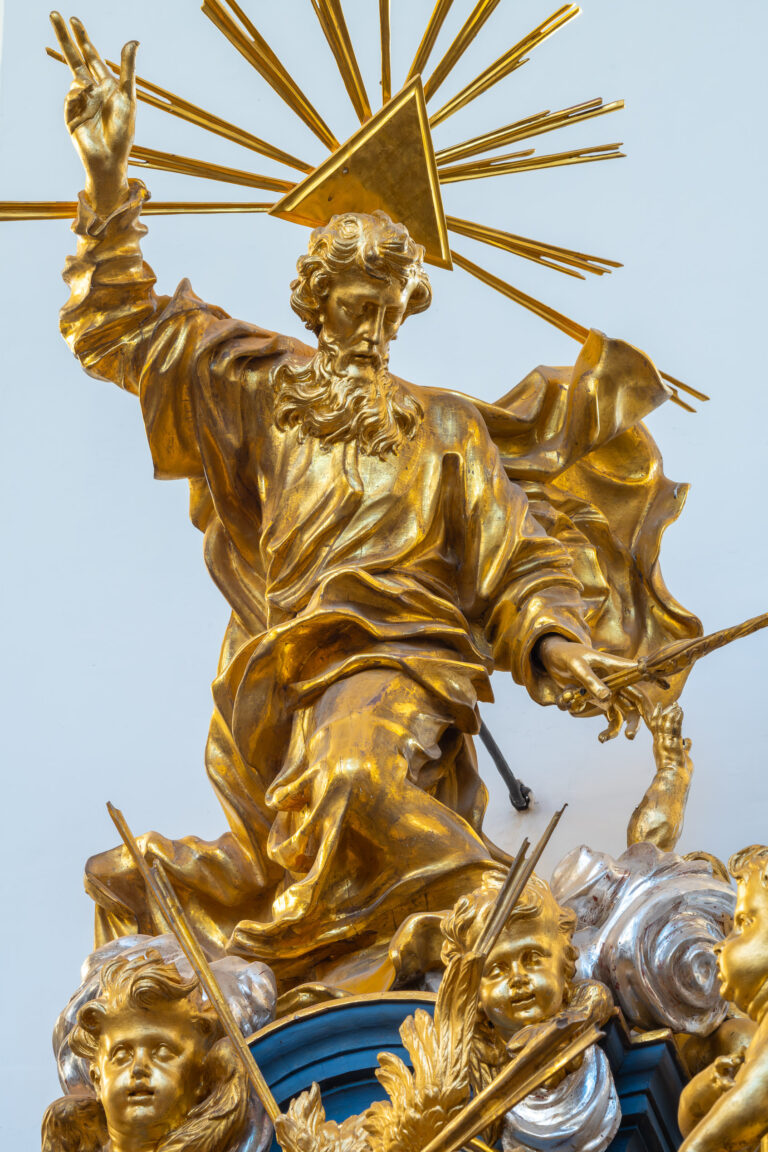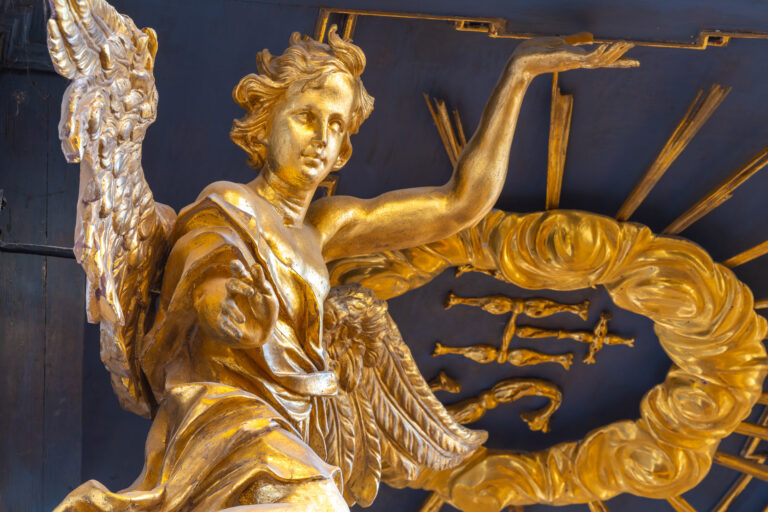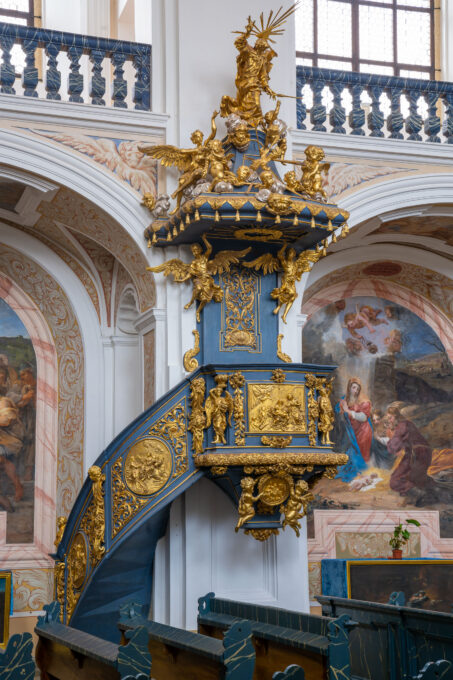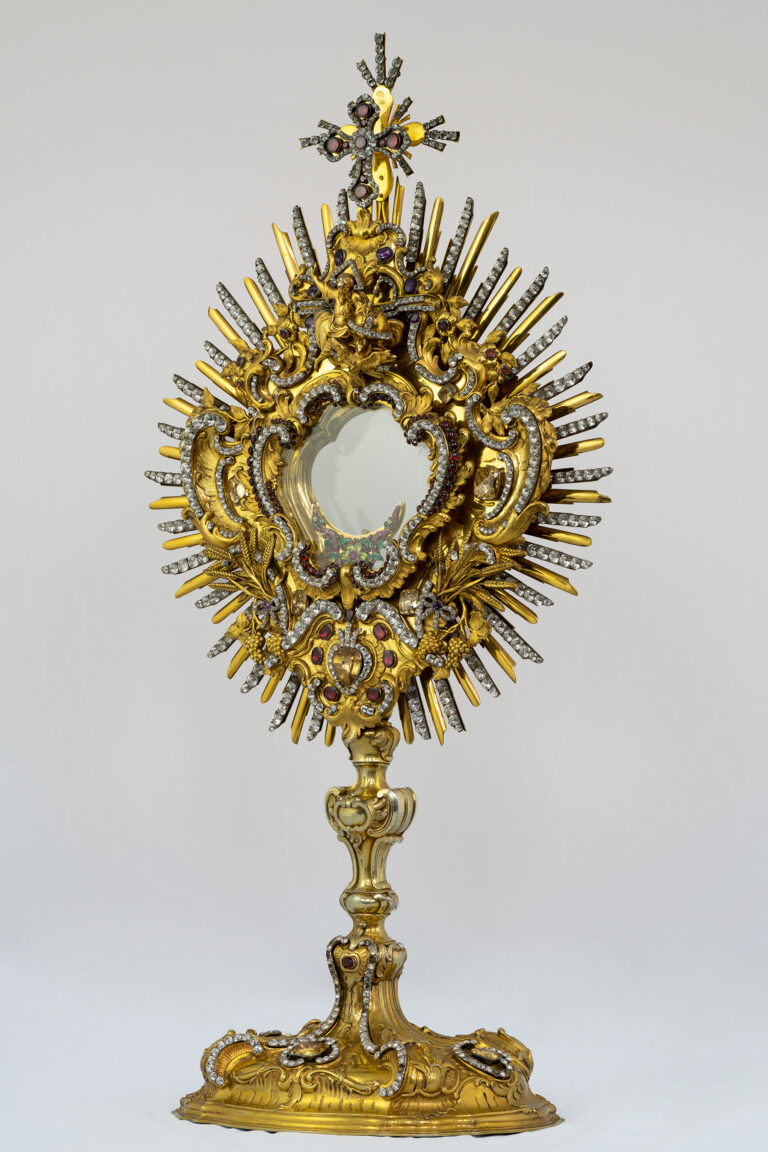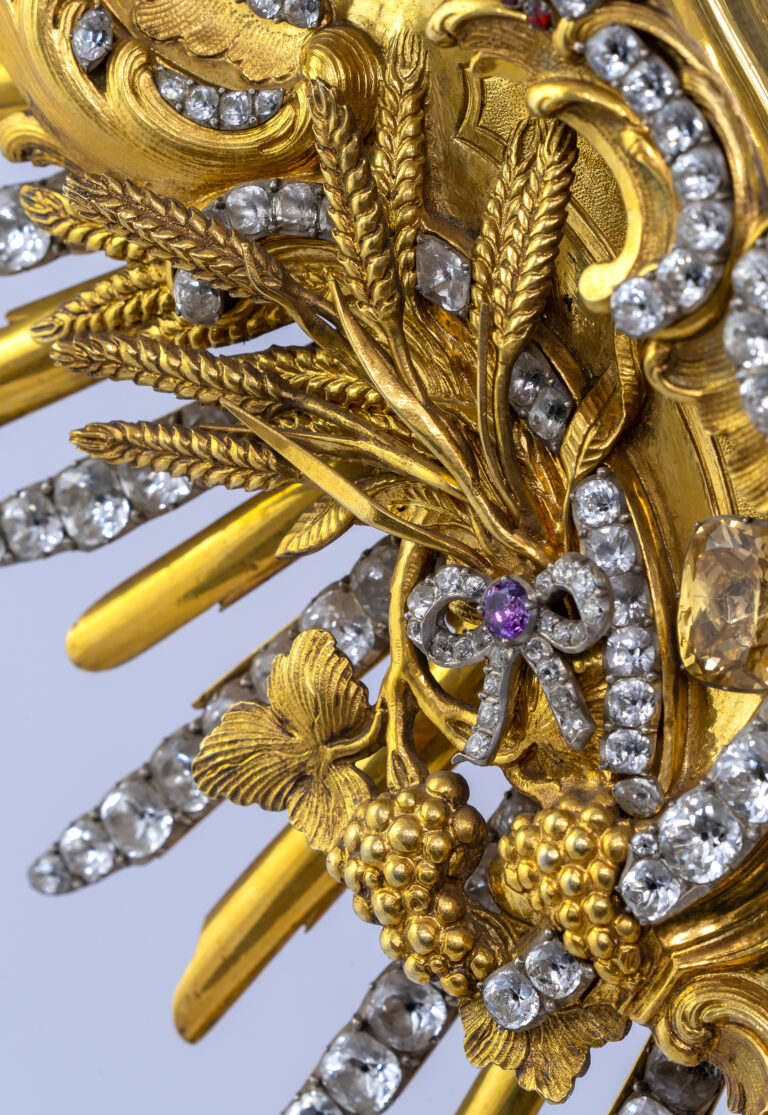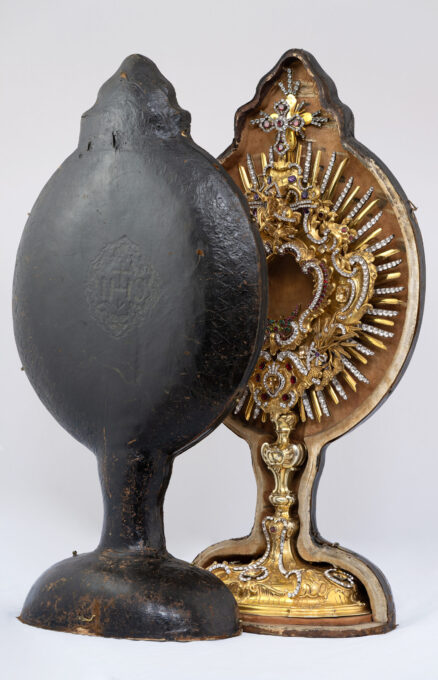Church of St. Joseph in Krzeszów
explore
History
Unusual
friars'
temple
The Church of St. Joseph was built between 1690 and 1696 on the initiative of Abbot Bernard Rosa. The building was erected on the site of the temple of St. Andrew the Apostle as the main seat of the established St. Joseph Confraternity.
The church was planned as a new parish church, but also as the seat of the ever-growing Confraternity of St. Joseph, founded in 1669.
The functions envisaged greatly influenced the character of the building and its decoration. The simplicity of the message and its content was intended to assist the preachers in preaching the Word of God and evangelising the faithful, while the polychrome paintings in the interior show the visitors the story of Joseph and the Holy Family.
The Church in its decor has been subordinated to the Protector of Christ, because at every step the viewer, by means of paintings or sculptures, is presented with the figure of St. Joseph and his participation in the history of salvation.
 gigapanorama
gigapanorama
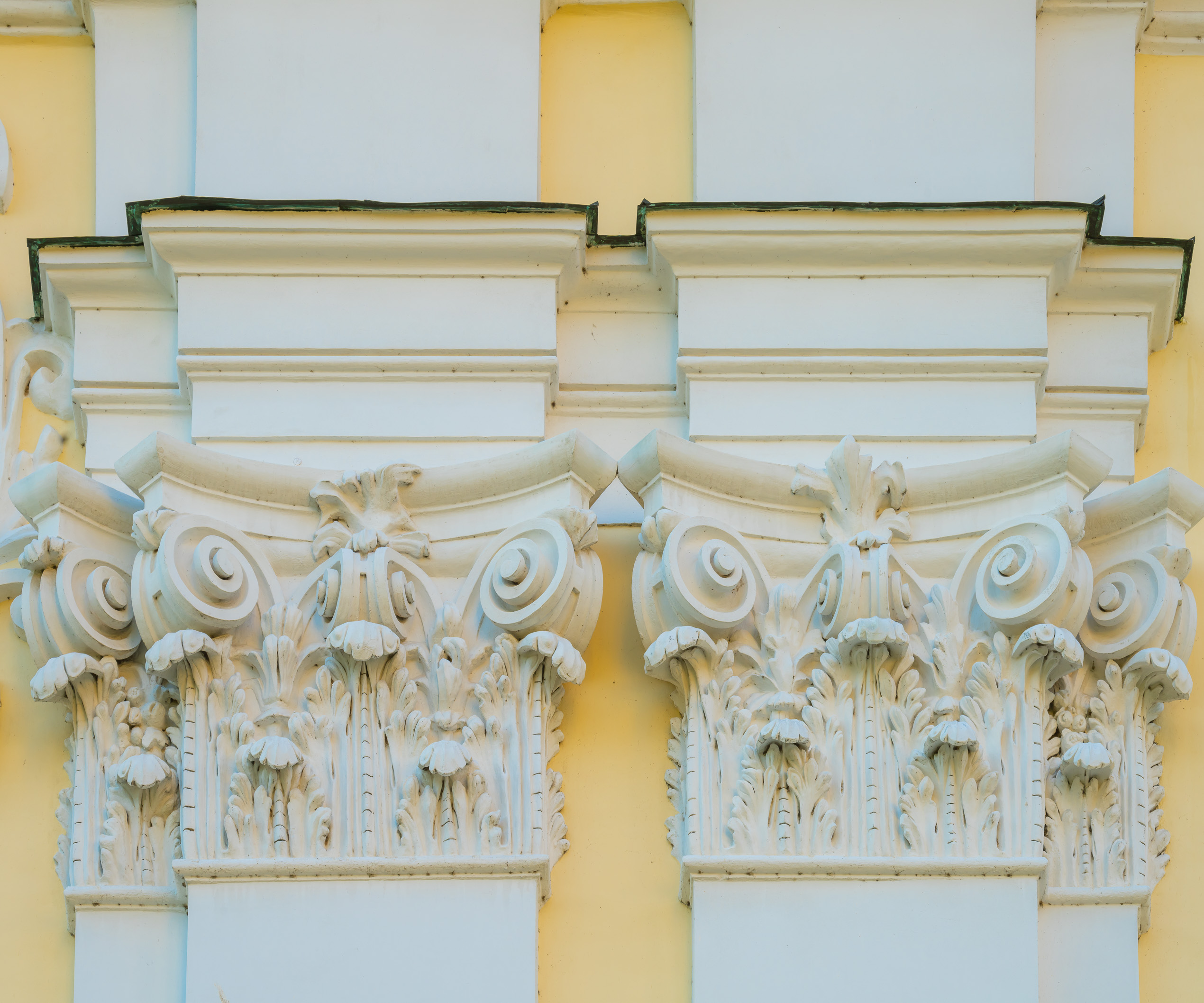
Part of the larger story
The history of the Krzeszów Abbey, as well as the creation of the Baroque monastery church, is closely linked to the history of Silesia. It was founded by a Prince from the dynasty of the eldest son of Bolesław Krzywousty – Władysław. The time of the greatest development and construction of a new abbey church called “House of Mary’s Grace” was related to and resulted from the competition between Catholics and Protestants. Eventually, the existence of the monastery came to an end as a result of an edict by Prussian King who closed most of the monasteries in Silesia in 1810.
Architecture
An inconspicuous
pearl
The simple shape of the church in no way foreshadows what awaits inside.
The simple facade does not compare to the front of the nearby former monastery church of the Assumption of the Blessed Virgin Mary. However, the more inquisitive will notice a subtle reference to the Church of the Gesù in Rome.
The church is arranged along a north-south line, thus abandoning the tradition of orientation. The façade of the church features sculptures representing the Holy Family. Mary (on the left) has the moon under her feet. Christ, in the centre, holds a royal apple in His hand – a symbol of power – while blessing people with His other hand. Below Him, the year of the church’s dedication (1696) is written in golden numerals.
Joseph, holding a burning heart, is depicted symmetrically to Mary. Originally, the church was planned with two towers, which eventually collapsed during construction in 1693. Finally, the church was covered with a gable roof and the façade was finished with an attic in the 18th century.

Building
in honour
of the Holy
Family
Architecturally, the church is subordinated to the mural paintings that accompany visitors at every turn. Several solutions were decided upon for prominence, which together in their time formed an innovative work.
The interior is an example of a hall church with matroneum, with one nave and rows of chapels creating the illusion of a three-nave interior. The church was built on a rectangular plan with a presbytery in the shape of an apse.
The north-south orientation of the building and the rows of gigantic windows mounted at the height of the galleries – on both the east and west sides – mean that the church is well lit despite the lack of chandeliers hanging from the vault.
This procedure facilitates the exposition of the paintings. To illuminate the frescos on the barrel vault, lunettes were used, which are also decorated with polychromes.
 gigapanorama
gigapanorama
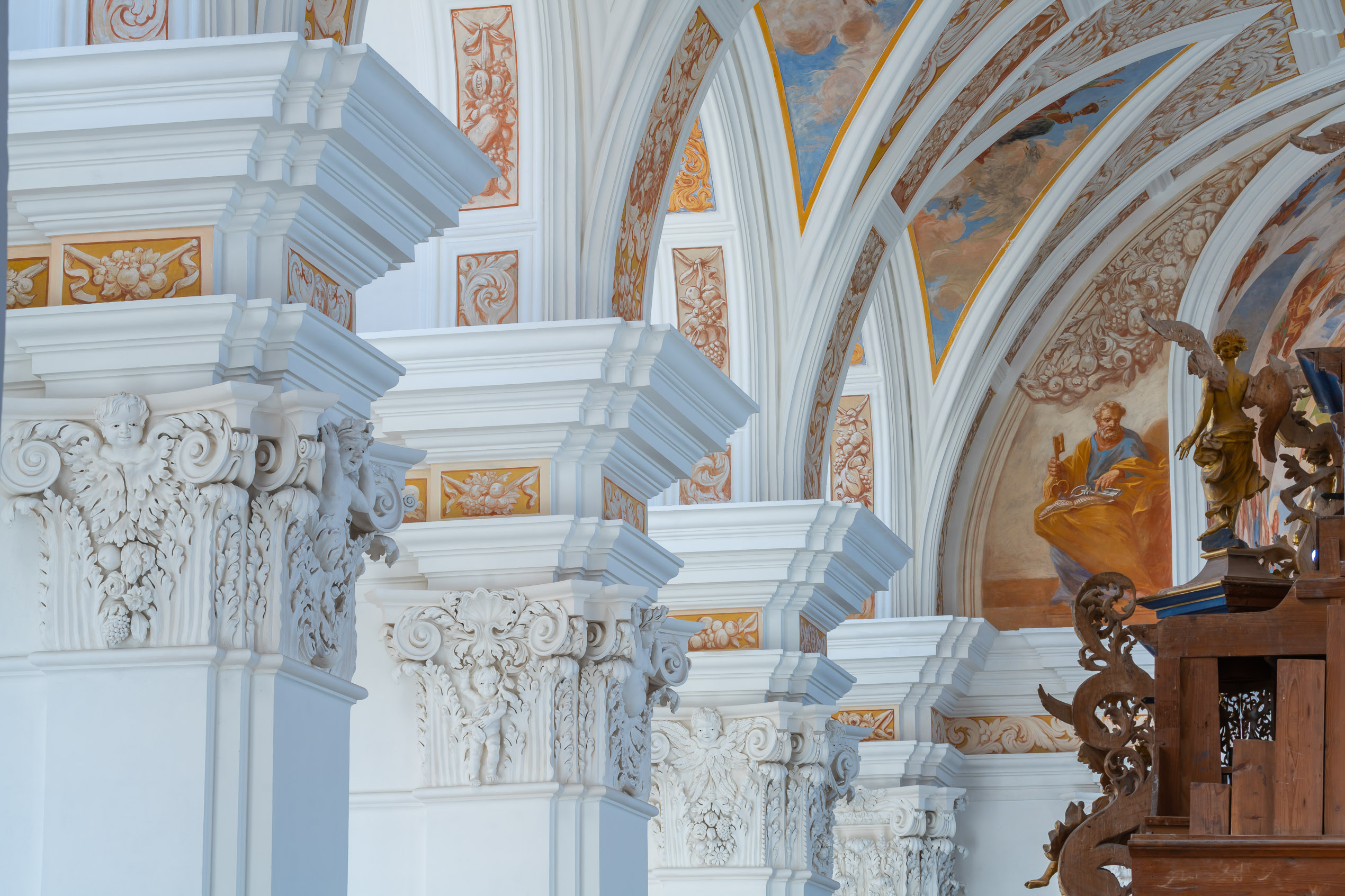
Roof
truss
The roof truss and the roof itself of St. Joseph’s Brethren Church are very simple – the main nave of the temple is covered with a gable roof, covered with copper sheets.
The simple construction of the three-tier roof truss made it possible in the 20th century to store the collection of the Great Prussian Library in the attic of the Krzeszów temple. About 500 chests, being a part of the so-called “berlinka”, were transported to Krzeszów at the end of the Second World War.
After the end of the conflict, it was secured and transported to Krakow, first to the monasteries of Fr. Dominicans and Franciscans, and then to the Jagiellonian Library, where it can be found to this day.

Main altar
Main
altar
The wooden furnishings of St. Joseph’s Church are small so as not to cover the frescoes.
A perfect example is the main altar, which does not obscure the polychrome depicting the Joy of the Adoration of the Magi stretched on the walls of the presbytery. The wooden construction transitions into the late Baroque-Rococo style.
The figures of the Created Trinity – from the left Mary, Emmanuel and Joseph – were made by Joseph Lachiel in 1775. The tabernacle is older, coming from the demolished Gothic monastery church. On the sides, relics of saints are placed in glass cases. On the canvas antependium of the altar, there is a painting depicting the Shepherds’ Adoration.
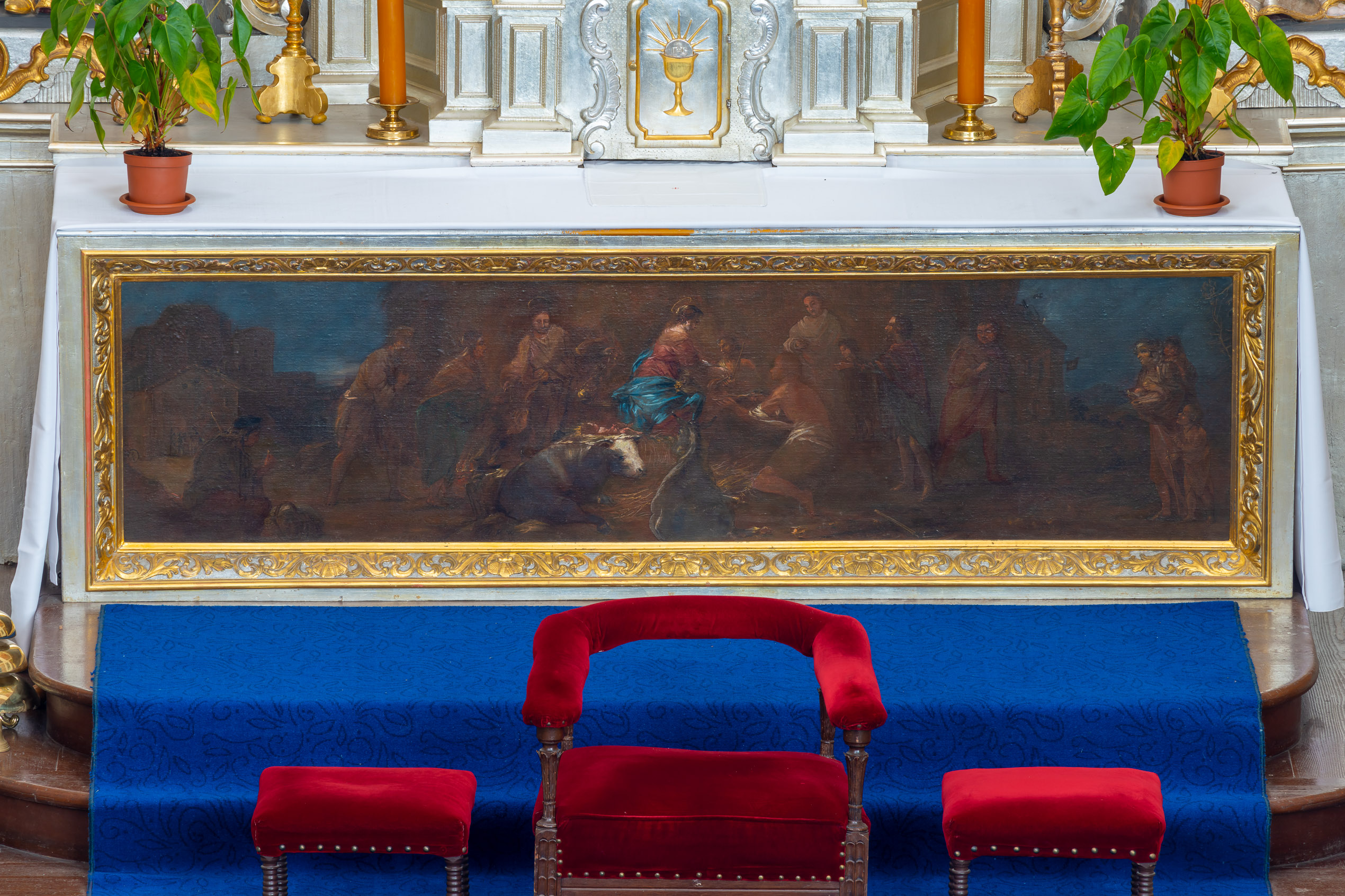
Painting
Silesian
Sistine
Chapel
Michael Willmann, the “Silesian Rembrandt”, created more than 50 wall polychromes in three years, which adorn the interior of the Confraternity.
The multitude of these representations in one place makes the church in Krzeszów the largest collection of frescoes in Northern Europe. The seat of the Confraternity of St. Joseph is popularly known as the “Silesian Sistine Chapel”.

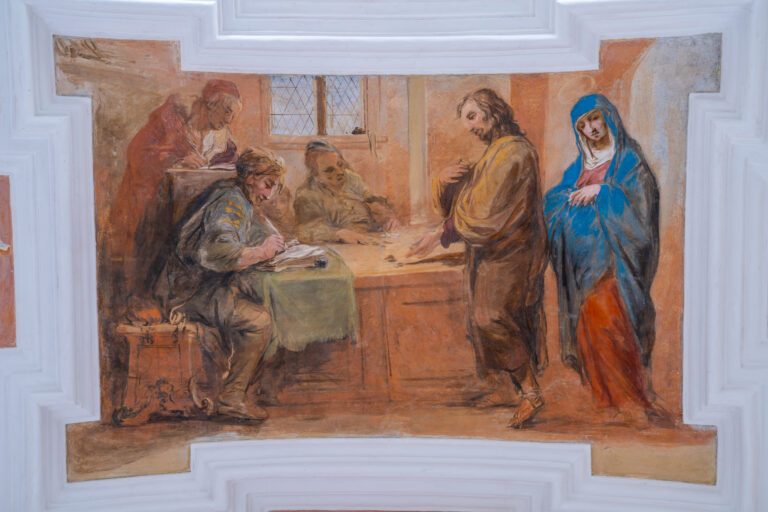
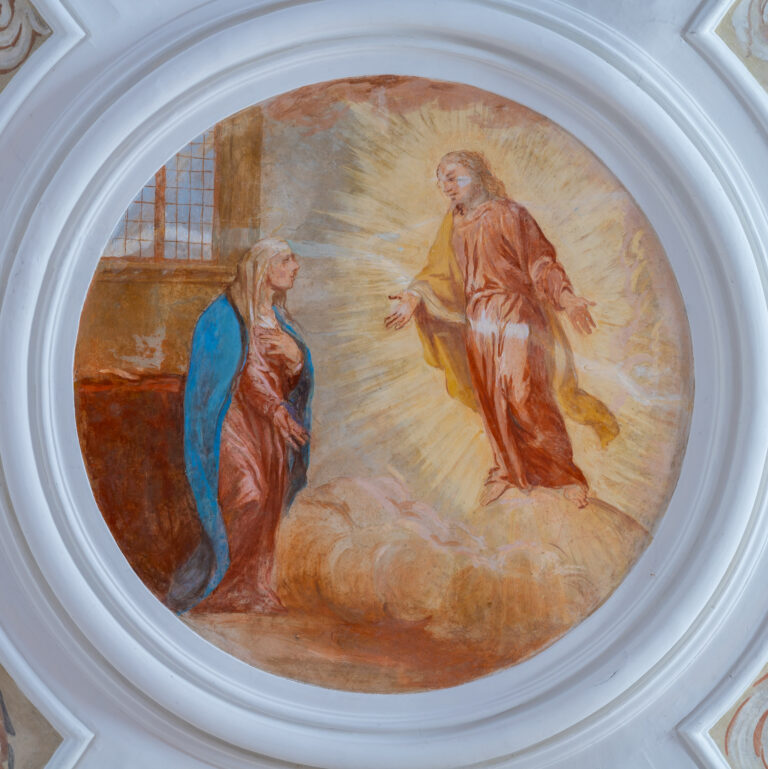
The wall paintings in the St. Joseph’s Church refer in their content to the figure of the patron saint. Among the numerous paintings in the nave, we can distinguish two cycles: The Seven joys of St. Joseph and The Seven Sorrows of St. Joseph which, when combined, tell the story of the Guardian of the Holy Family from the moment of his marriage to Mary to the glory of the Saint after death.
On the vault, the painter depicted The Ancestors of the Holy Family starting from Abraham. Besides the narrative frescoes, the church is also full of decorative polychromes: angelic motifs and plant ornaments.
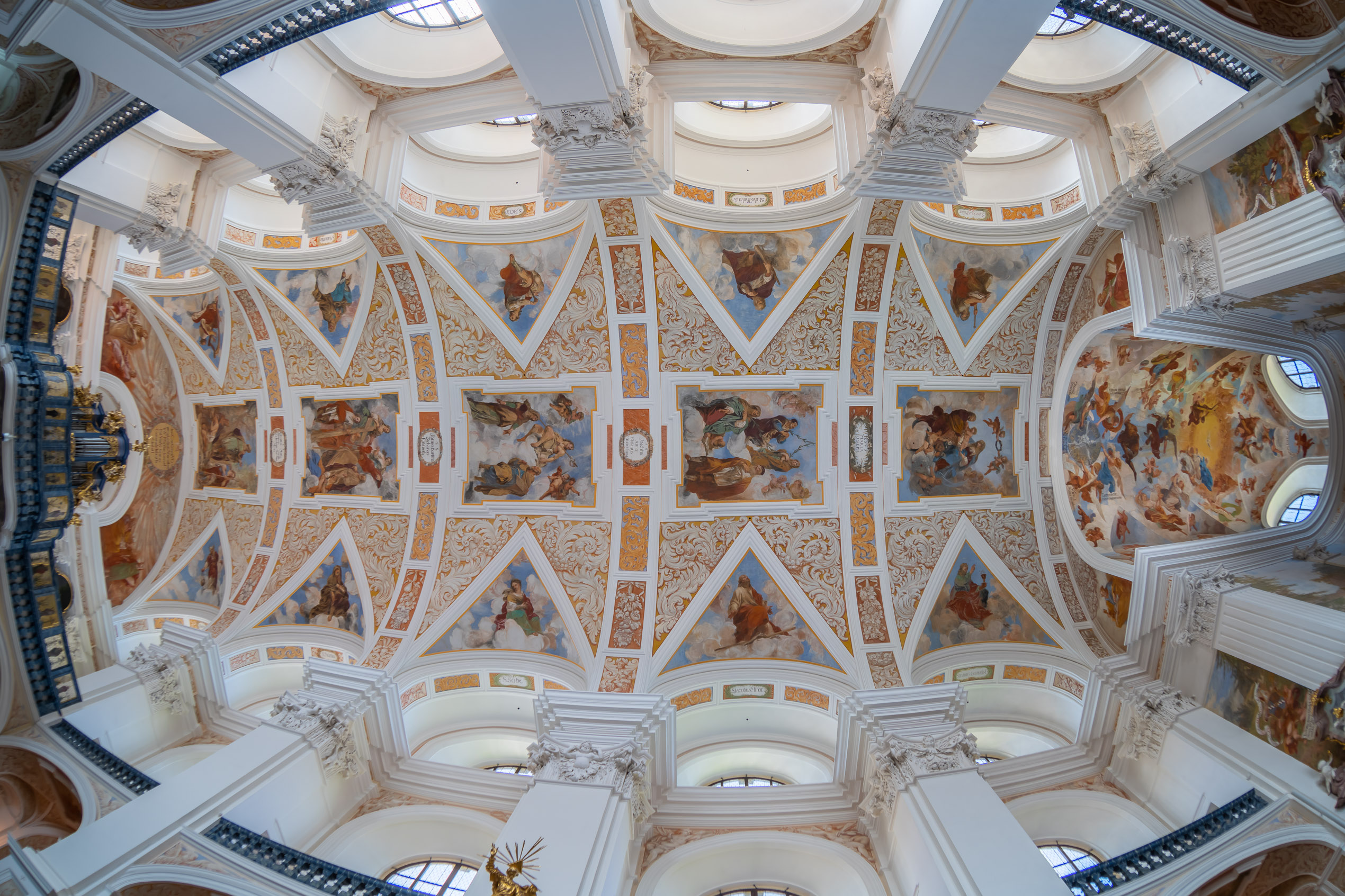
The genealogical
tree of Christ
The series of frescoes in the vault of the nave of the Church of St. Joseph represents the Genealogical Tree of Christ.
It begins above the organ gallery with the image of Abraham and Isaac lying on a trunk – a symbolic reference to the beginning of the genealogy. It ends on the walls of the presbytery, where Willmann depicted the apostles – Peter and Paul – symbolising the Universal Church.
There is close collaboration in the case of the vaulting, as lunettes – triangular clearings – were introduced to illuminate the vaulting. The surface of the lunettes was then covered with polychromes.
 gigapixel
gigapixel
The 7 joys
of St. Joseph
The main part of the story of St. Joseph is depicted on the sidewalls of the nave. On the western side of the church, 7 joys of St. Joseph are depicted, they are illuminated by the rays as the sun rises. The motifs depicted in the frescoes are complemented by the scenes depicted under the arches and in the antependia, which are near the central representations.
St. Joseph’s first joy is his engagement to Mary. In the fresco, the engaged couple is depicted together at the moment of blessing by the priest. In the fresco, St. Joseph holds a palm in his left hand, a symbol of purity, his other hand extending toward Mary. Angels shower the couple with wreaths and bouquets, while the Holy Spirit hovers above them in the form of a dove, illustrating the words The Holy Spirit will come on you, and the power of the Most High will overshadow you. (Lk 1:35).
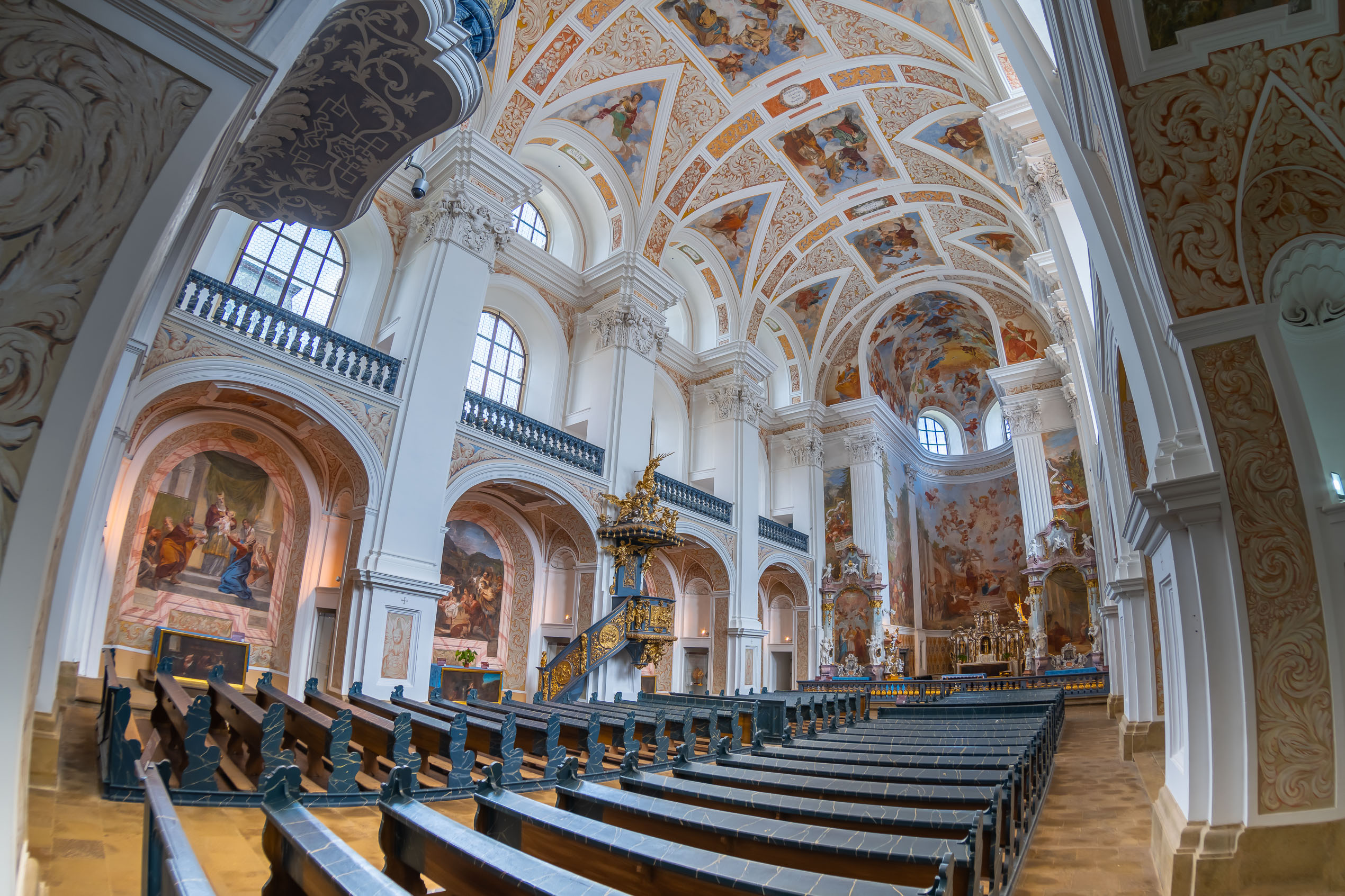
7 sorrows
of St. Joseph
Opposite the 7 joys of St. Joseph is a series of wall polychromes depicting the 7 sorrows of the Guardian of the Holy Family. Like the other frescoes, these are also illuminated by sunlight.
Due to the location of these representations on the eastern wall in the nave, the sun exposes them from afternoon until sunset. The motifs depicted in the frescoes are complemented by scenes depicted under the arches and on the antependia, which are near the central representations.

Easel
painting
The Church of St. Joseph is dominated by Michael Willmann’s wall polychromes. These frescos cover almost the entire surface of the walls. The canvas paintings in the church today are only being stored.
They were ordered by the abbey and intended to promote the cult of the Guardian of the Holy Family or the Passion of Christ. Among them, one can find works by such artists as Michael Willmann, Martin Leistritz or Johann Classens.

Sculpture
The Communion
of Saints
There are few carved representations in St. Joseph’s Church. This is due to the shift of focus to the paintings, which formed a Paupers’ Bible and were used to evangelise the people coming to the church.
To emphasise the paintings, it was decided to keep minimal wooden furnishings so as not to restrict visibility. The few works by sculptors include the 18th-century pulpit and the main altar with sculptures by Georg Schrötter.
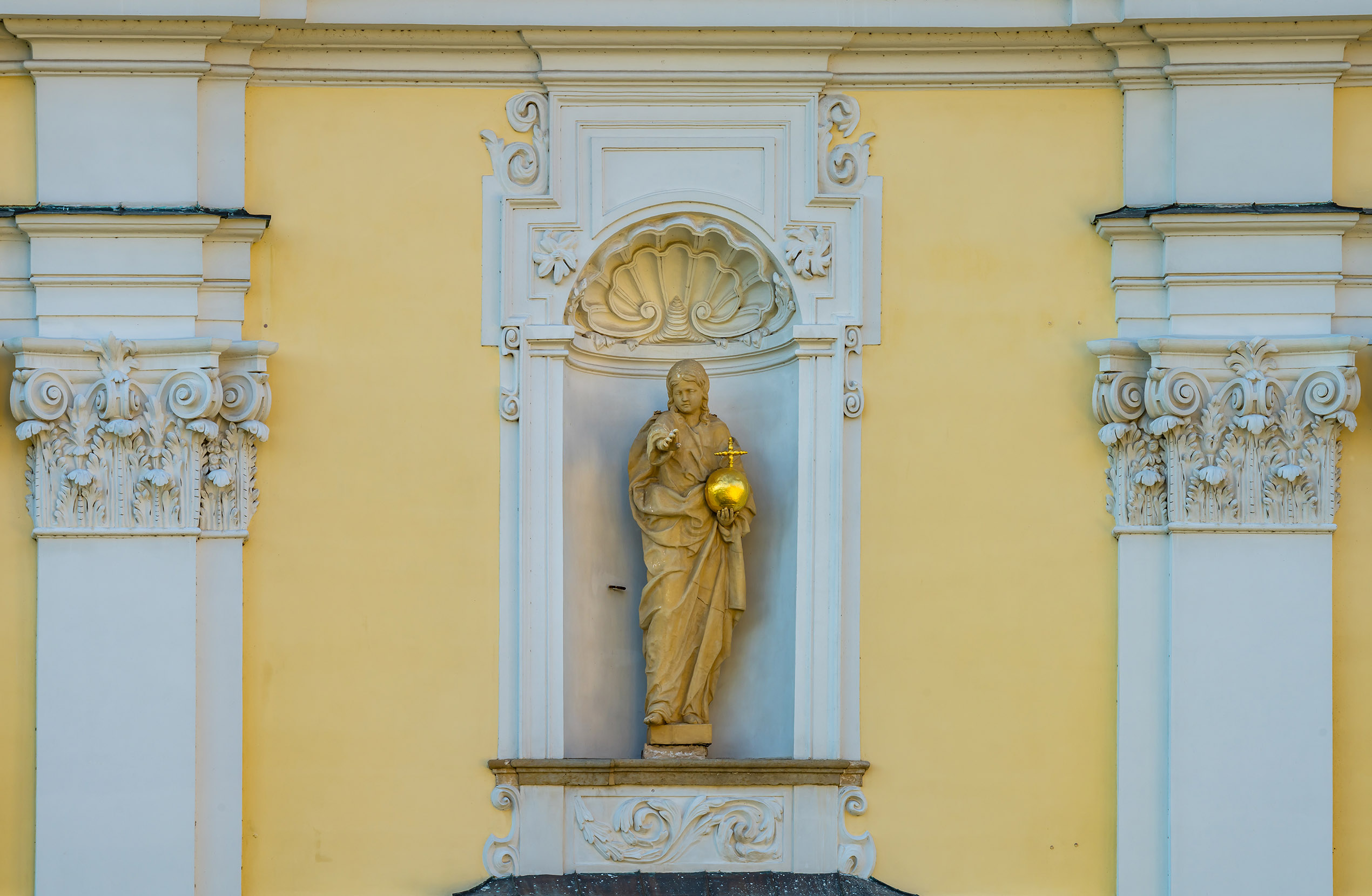
Pulpit
The wooden structure was made by Anthony Jörg. It was created between 1700 and 1707. The Holy Trinity can be seen on the canopy. At the top, there is God the Father surrounded by angels, a little lower there is a dove – the symbol of the Holy Spirit, and above, there is the IHS monogram, symbolizing Christ.
On the basket, there are four reliefs depicting scenes from St. Joseph’s life: Lord Jesus helping his parents at work; Adoration of the Child Jesus; Flight into Egypt; the Angel wakes up St. Joseph to run away to Egypt. At the very bottom of the basket, there is the coat of arms of the Krzeszów Abbey and the coat of arms of St. Joseph’s Confraternity. It depicts the allegory of the Church fighting together with the motto: Pro Deo et Ecclesia i.e. for God and the Church.
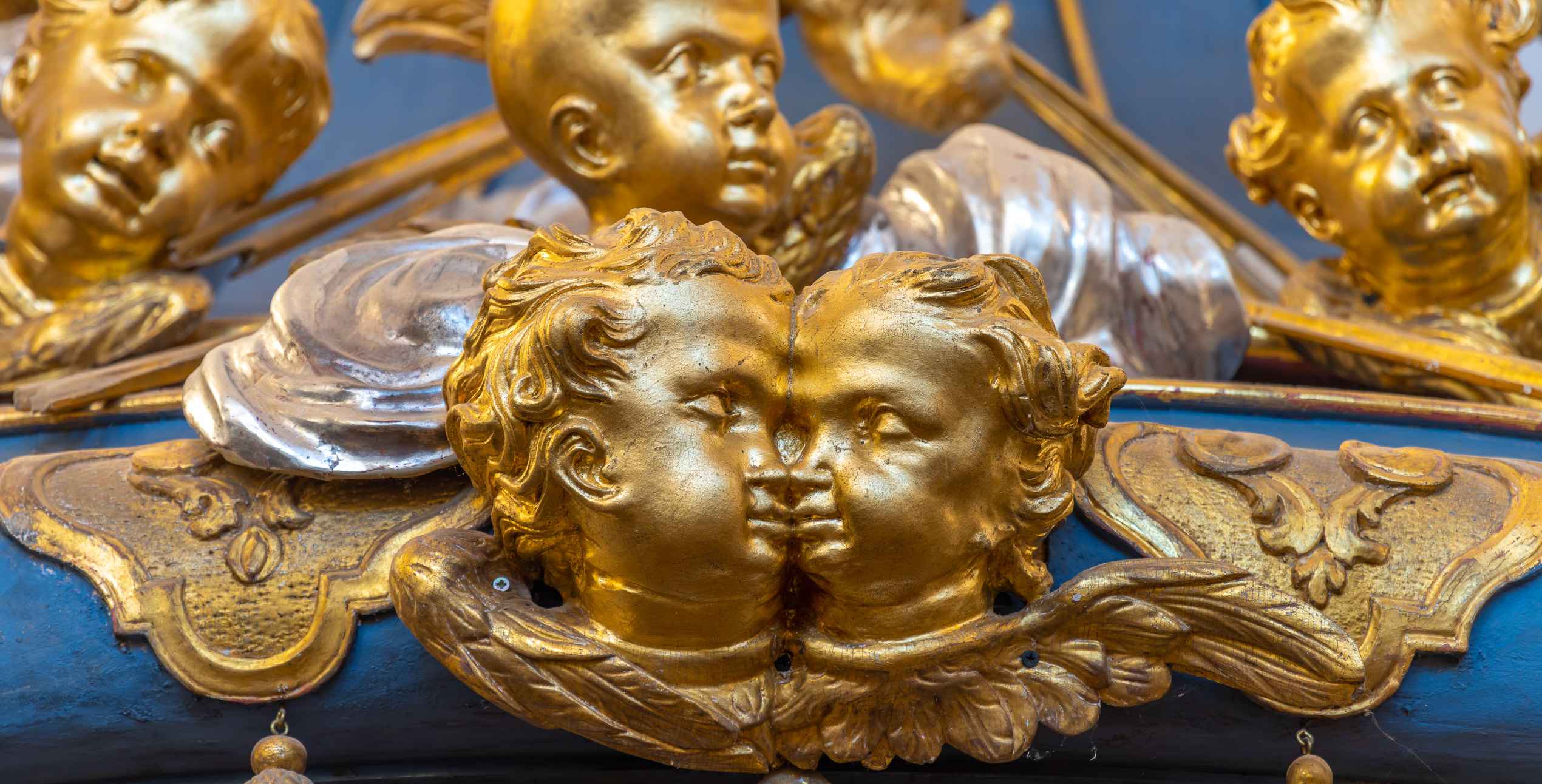
Craftsmanship
Liturgy
setting
Due to the effects of monastic dissolution in the 19th century, a small part of the liturgical objects has remained behind the walls of the post-Cistercian abbey.
Some items from the 17th and 18th centuries which were ordered by the successive Krzeszów Abbots have survived until today. The most exceptional are liturgical objects made for Innocent Fritsch on the occasion of his 50th monastic vows anniversary in 1733. An example of such a gift is the “Emanuel” chalice. Also, an aspersorium which was ordered by Bernard Rosa has been preserved until this day. The other remaining items are mainly candlesticks.
Promotion of Culture
Roman Catholic Parish under the invocation of the Assumption of the Blessed Virgin Mary located in Krzeszów – beneficiary of the Project: “Digitisation of the Monument of History – St. Joseph’s Church in Krzeszów – Pearl of the European Baroque – Stage II”, which received a subsidy from the Ministry of Culture, National Heritage and Sport, coming from the Fund for the Promotion of Culture – a state purpose fund.
